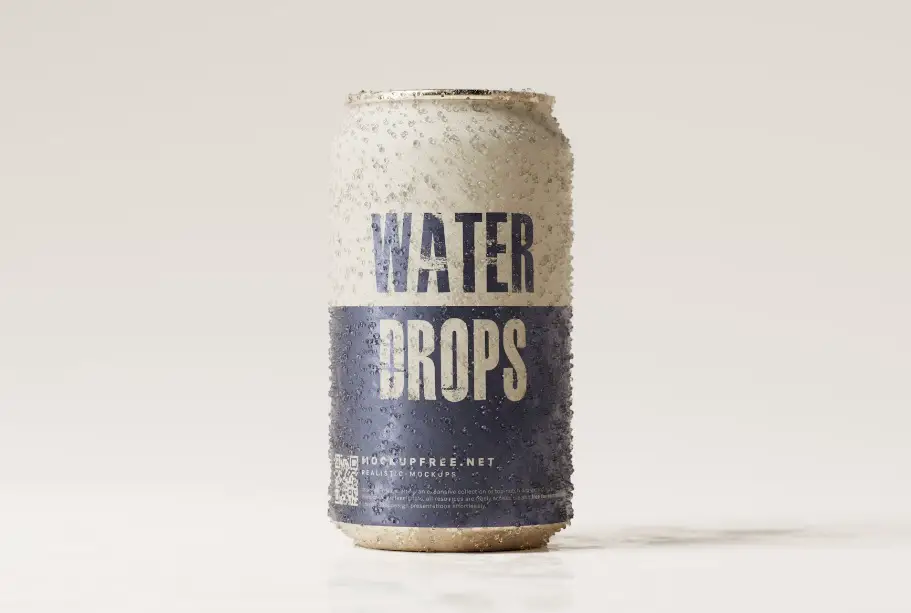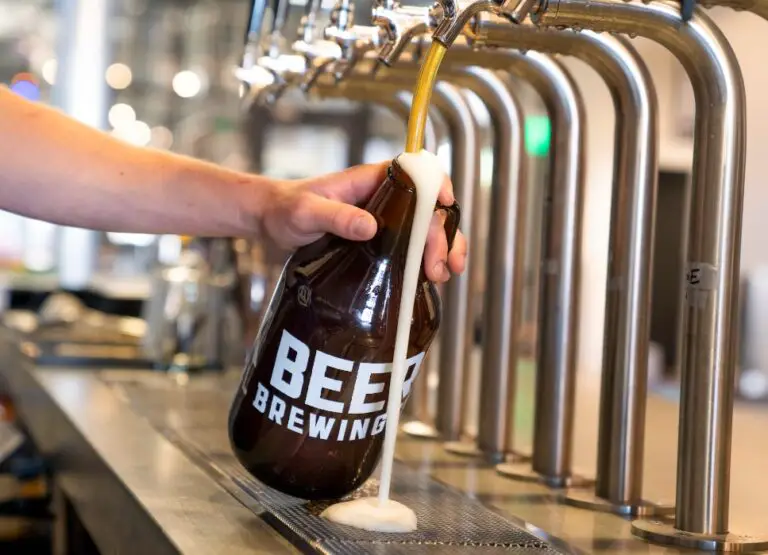Does Beer Have Nitrates?
Does beer have nitrates? Yes, beer does have nitrates, but very low amounts.
The amount of nitrates in beer varies depending on factors such as the brewing process, ingredients used, and the specific beer style. On average, a standard beer might contain trace amounts of nitrates, well within the permissible limits set by regulatory standards.
It’s worth noting that the health implications of these low levels are minimal and generally considered safe for consumption.
The nitrate content in beer is generally low, typically ranging from 1 to 5 milligrams per liter (mg/L). However, these values can vary depending on the specific beer type, brewing methods, and ingredients.

What are Nitrates?
Nitrates are chemical compounds composed of nitrogen and oxygen, specifically the nitrate ion (NO3-). They are naturally occurring and can be found in various forms in soil, water, and air. Nitrates play a crucial role in the nitrogen cycle, acting as a nutrient for plants and microorganisms.
In terms of human health, while nitrates themselves are not inherently dangerous or poisonous, they can undergo conversion to nitrites under certain conditions. Nitrites can react with naturally occurring amines to form nitrosamines, some of which are known to be carcinogenic. This process can occur in the human body, particularly in the stomach, and is influenced by factors such as diet and gastric conditions.
Sources of nitrates include fertilizers, animal waste, and industrial activities, which can lead to elevated nitrate levels in soil and water. Additionally, certain foods, particularly vegetables like leafy greens and root crops, can contain nitrates naturally.
It’s important to note that strict regulations and guidelines are in place to monitor and limit nitrate levels in drinking water and food products, ensuring that exposure remains within safe limits. Overall, while nitrates are a natural part of the environment and diet, their potential conversion to nitrites and nitrosamines highlights the importance of balanced dietary choices and regulatory measures to minimize health risks.
Are Nitrates Good or Bad for You?
The health implications of nitrates depend on various factors, and the answer is not strictly categorized as either “bad” or “good.” Here’s a nuanced perspective:
Natural Role in the Environment
- Nitrates are essential for the nitrogen cycle and play a crucial role in providing nutrients to plants and microorganisms.
- In this context, nitrates are a natural and necessary component of the environment.
Dietary Nitrates
- Many fruits and vegetables contain nitrates, contributing to a balanced diet. Nitrate-rich vegetables like leafy greens and beets are associated with potential health benefits, including cardiovascular health.
Nitrate Conversion to Nitrites
- In the body, nitrates can be converted into nitrites, especially in the stomach.
- Nitrites can further react with amines to form nitrosamines, some of which are considered carcinogenic.
Regulatory Standards
- Regulatory authorities set limits on nitrate levels in drinking water and certain foods to ensure that exposure remains within safe ranges.
Moderation is Key
- Consuming nitrates from natural sources like vegetables is generally considered safe and even beneficial.
- Excessive intake of nitrates, particularly from processed meats and other sources, may pose health risks.
Individual Sensitivity
- Individuals with specific health conditions may be more sensitive to nitrate/nitrite exposure, necessitating personalized dietary considerations.

Nitrates in the Brewing Process
Overview of the Beer Brewing Process
Brewing beer is a complex process that involves the fermentation of sugars by yeast to produce alcohol and carbonation. The basic steps include malting, mashing, boiling, fermenting, conditioning, and packaging. During malting, barley grains are germinated and dried, leading to the development of enzymes that convert starches into fermentable sugars. Mashing involves soaking the malted barley in hot water to extract these sugars, and boiling incorporates hops for flavor and aroma.
Potential Sources of Nitrates in Beer Production
- Raw Ingredients: Barley, a primary ingredient in beer, can absorb nitrates from the soil during growth. Hops, another crucial component, may also contain trace amounts.
- Water: The water used in brewing may contribute nitrates if sourced from areas with elevated levels.
- Additives: While uncommon, certain additives or fining agents may introduce nitrates into the beer.
Factors Influencing Nitrate Levels in Beer:
- Barley Quality: The quality of barley and its nitrate content depend on the cultivation conditions, including soil composition and fertilization practices.
- Hops Selection: Different hop varieties may have varying nitrate levels, impacting the overall content in the final beer.
- Water Source: The nitrate content of the water used in brewing can influence the overall nitrate levels in the beer.
- Brewing Techniques: Factors such as brewing temperature and fermentation conditions can influence the conversion of nitrates to nitrites and, subsequently, the potential formation of nitrosamines.
- Quality Control Measures: Breweries implement quality control measures to monitor and regulate nitrate levels, ensuring compliance with safety standards and delivering a consistent product.

Nitrates in Various Beer Styles
Variances in Nitrate Levels Among Various Beer Styles
The nitrate content in beer can vary significantly among different styles, reflecting variations in ingredients and brewing techniques.
Lighter beer styles, such as lagers and pilsners, often exhibit lower nitrate levels, as their ingredient profiles typically involve a lighter malt bill and fewer additives.
Conversely, stronger and more robust styles like stouts or certain ales may have slightly higher nitrate concentrations due to the complexity of their recipes, which can include a richer malt profile and a diverse selection of hops.
Impact of Brewing Methods on Nitrate Concentration
- Mashing and Boiling: The mashing and boiling stages of brewing can influence nitrate concentrations. The malt selection, mashing temperature, and duration can affect the release of nitrates from barley into the wort.
- Hop Additions: Different hop varieties contribute distinct flavors and aromas to beer but may also introduce varying levels of nitrates. The choice of hops and the timing of their addition during brewing can impact the final nitrate content.
- Fermentation Conditions: The fermentation process itself, including yeast activity and temperature control, plays a role in determining the final nitrate levels. Certain yeast strains may influence nitrate reduction or retention during fermentation.
- Filtration and Conditioning: Filtration and conditioning methods employed by brewers can further affect nitrate concentrations. Careful filtration may remove particulate matter containing nitrates, while conditioning processes can impact the overall stability of nitrate levels in the finished product.
Regulatory Standards for Nitrates in Beer
International and Local Regulations On Nitrate Levels in Beverages:
Global Standards: International organizations, such as the World Health Organization (WHO) and the Food and Agriculture Organization (FAO), provide guidelines on acceptable nitrate levels in food and beverages. These standards aim to protect public health and establish consistent safety measures on a global scale.
Local Jurisdictions: Countries and regions often have their own specific regulations regarding nitrate levels in beverages, including beer. Local health authorities set permissible limits to ensure the safety of consumers and prevent potential health risks associated with excessive nitrate intake.
Compliance and Monitoring in the Brewing Industry:
Quality Control Procedures: Breweries implement stringent quality control measures to comply with regulatory standards. This involves regular testing of raw ingredients, in-process samples, and finished products to monitor nitrate levels and other quality parameters.
Laboratory Analysis: Breweries employ laboratories equipped with advanced analytical tools to accurately measure nitrate concentrations. These analyses help ensure that the beer meets the stipulated safety standards before it reaches consumers.
Record-Keeping: Breweries maintain detailed records of brewing processes, ingredient sourcing, and quality control results. These records serve as documentation of compliance with regulatory standards and provide transparency in the production chain.
Collaboration with Regulatory Authorities: Breweries work collaboratively with local health and regulatory authorities to stay informed about any updates or changes in nitrate regulations. This collaboration ensures that breweries can adapt their processes accordingly to maintain compliance.

Managing Nitrates in Beer Production
Managing nitrate levels in beer involves a combination of careful ingredient selection, brewing techniques, and quality control measures. Here are some key strategies:
- Barley Selection: Choose high-quality malted barley with lower nitrate levels. Consider the barley’s origin and cultivation practices.
- Hop Varieties: Select hops with known lower nitrate content. Different hop varieties can contribute unique flavors and aromas while influencing the overall nitrate levels.
- Be mindful of the nitrate content in the water used for brewing. If the water source has elevated nitrate levels, consider water treatment methods to reduce nitrate concentrations.
- Employ effective filtration methods during the brewing process. Filtration can help remove particulate matter containing nitrates, ensuring a cleaner and more stable final product.
- Optimize mashing parameters to minimize the release of nitrates from barley into the wort. Control mashing temperature and duration to influence nitrate extraction.
- Monitor boiling conditions to manage the breakdown of nitrates and their potential conversion to nitrites.
- Choose yeast strains that exhibit good nitrate reduction capabilities during fermentation. The right yeast can play a role in minimizing nitrate levels in the final beer.
- Control fermentation temperature to optimize yeast activity and further influence the reduction of nitrates.
- Implement rigorous quality control procedures throughout the brewing process. Regularly test samples for nitrate levels to ensure compliance with regulatory standards.
- Keep detailed records of brewing processes, ingredient batches, and quality control results.
- Regularly monitor nitrate levels in the finished beer to confirm that it meets safety standards. Conduct laboratory analyses using appropriate methods to quantify nitrate concentrations accurately.
- Stay informed about local and international regulations regarding nitrate levels in beer. Collaborate with regulatory authorities to ensure compliance and adjust brewing processes as needed.

Wrapping It Up
In a nutshell, beer contains nitrates, but it’s all good news! Breweries use smart techniques to keep nitrate levels low and in line with safety rules. So, when you’re enjoying your favorite brew, you can trust that it not only tastes great but is also made with care to ensure it’s safe for sipping.

I am a young architect with a passion that goes beyond blueprints… it’s beer! undertherosebrewing.com is more than just a blog, it’s a manifestation of my lifelong dream to explore, read, and learn everything about beer. Join the blog on this unfiltered and genuine adventure into the heart of beer culture. Cheers!






